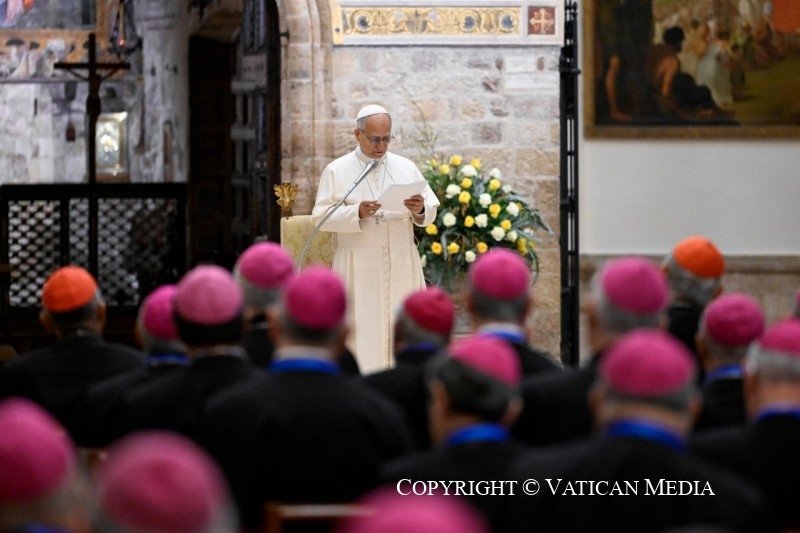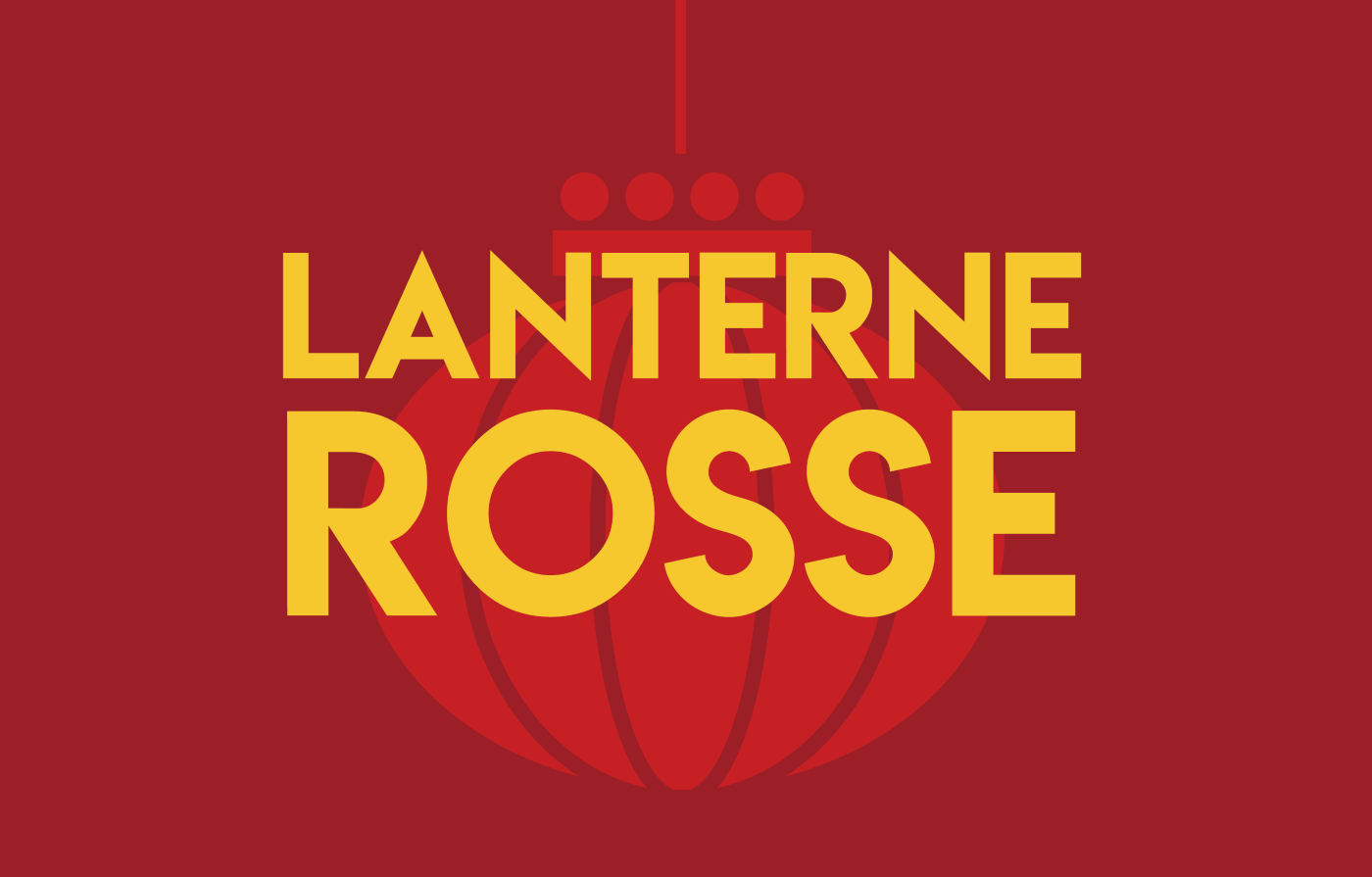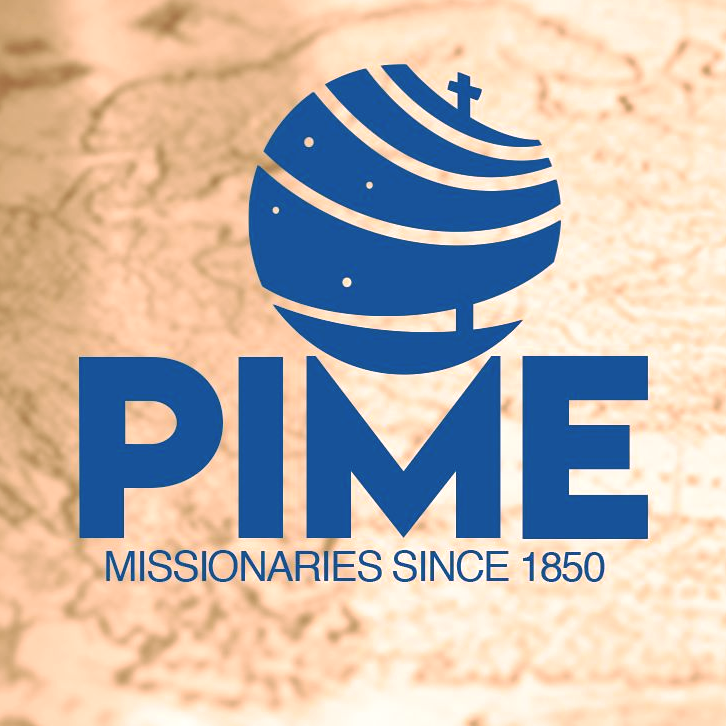Leo XIV visits the tomb of Saint Francis in Assisi, tells Italian bishops to be artisans of fraternity
The Umbrian city welcomed Pope Leo XIV on the first Italian visit of his pontificate to celebrate this great, humble, and poor saint at a time when the world seeks signs of hope. The pontiff will return in 2026 to mark the 800th anniversary of the saint’s death. Speaking to the members of the Catholic Bishops’ Conference of Italy gathered at Santa Maria degli Angeli, he urged them “to listen to and harmonize tensions, developing a culture of encounter”.
Assisi (AsiaNews) – Leo XIV travelled to Assisi this morning for the first time since the start of his pontificate, on his first visit in Italy since he was elected last May.
In the city of Saint Francis, from whom his predecessor, Jorge Bergoglio, took his name, he met with the members of the Catholic Bishops’ Conference of Italy (CEI), who are gathered for their 81st General Assembly, and took part in its closing ceremony.
The meeting was held in the Basilica of Santa Maria degli Angeli, completed in 1679 to house the Porziuncola church, one of the most important and significant Franciscan sites.
"It is a blessing to be able to come here today to this sacred place," the pope said before meeting with the pastors of the dioceses of Italy, during a private prayer in the Lower Basilica of Saint Francis, in the crypt where the body of the Poverello lies.
“As we approach the 800th anniversary of Saint Francis’s death, we have the opportunity to prepare to celebrate this great, humble, and poor saint at a time when the world is searching for signs of hope,” he added.
The pope’s words also reverberated outside the Basilica, thanks to loudspeakers, which reached the faithful gathered in the lower square on a rainy day.
After landing by helicopter, Leo XIV arrived at the lower Basilica shortly after 8:30 am. He was accompanied to the tomb of Saint Francis by CEI President Cardinal Matteo Zuppi. Both were welcomed by the custodian of the sacred convent, Brother Marco Moroni.
In a statement, the Community of Assisi announced that the papal visit "represents a strong encouragement for the entire Franciscan family and for all the faithful to rediscover the figure of Saint Francis as a guide for building bridges of dialogue and sowing peace in a humanity in need of light.”
The pontiff reassured the friars of the Porziuncola that he will return in 2026, on the 800th anniversary of the death of the Poverello of Assisi.
The city of Assisi, a destination of constant pilgrimages over the centuries and a symbol of peace and fraternity, also has a long tradition of papal visits. It is here that Pope Francis signed the encyclical Fratelli Tutti in 2020.
The title of Francis’s social encyclical was inspired precisely by the way Saint Francis addressed the friars, "omnes fratres”. When the papal name of Leo’s predecessor was revealed, there was much surprise.
The Argentine pope explained that he came up with the name, a first for a successor of Peter, thinking about people living in poverty, as well as about peace, with the life of Saint Francis as an example, seeking a “Church that is poor and for the poor," which is one of the things he hoped for.
Brother Luca di Pasquale, with Leo XIV at the Porziuncola, told the press that the pope greeted those present "one by one and confided to us that he came to Assisi several times to find peace, and was happy to do so today in his white robe. We were struck by the attention he showed to each of us."
After meeting with the bishops, Leo XIV departed by helicopter for Montefalco (Perugia) to visit the community of Augustinian nuns.
In Assisi, the faithful – including many schoolchildren – welcomed the pontiff with shouts of “Viva il Papa” (Long live the Pope).
The Holy Father reminded his "brothers in the episcopate" gathered at Santa Maria degli Angeli, that the “gaze fixed on the face of Jesus" enables us to "look at the faces of our brothers and sisters,” and “faith in Him, our peace, requires us to offer everyone the gift of his peace”.
The pontiff stressed that the time we live in is marked by “divisions”, by “messages and language of hostility and violence," a "race for efficiency" that "leaves the most vulnerable behind; technological omnipotence" that "compresses freedom;" as well as "loneliness" that "consumes hope”.
Despite the “numerous uncertainties,” he noted, “the Word and the Spirit still urge us to be artisans of friendship, fraternity, authentic relationships in our communities”.
In his address, the pope said that the bishops’ task is “listen to and harmonize tensions, developing a culture of encounter and thus becoming prophets of peace for the world.”
Citing the Synod that has accompanied the Italian Church in recent years, he went on to say: “It is now up to you, Bishops, to outline the pastoral guidelines for the coming years”.
He expressed hope that “the face of a collegial Church, which shares common steps and choices, may take shape,” and that it may be able to “renew herself continually.”
Leo also cited “the inner attitude that Pope Francis has defined as ‘learning to say goodbye’, a valuable attitude when preparing to leave one’s position.”
“It is good to respect the rule of 75 years for the conclusion of the service of Ordinaries in dioceses and, only in the case of Cardinals, may a continuation of ministry be considered, possibly for another two years”, the pope explained.
“From this perspective, the Church in Italy can and must continue to promote an integral humanism, which helps and supports the existential journeys of individuals and society”.
14/10/2025 20:14
12/11/2021 18:34







.png)










